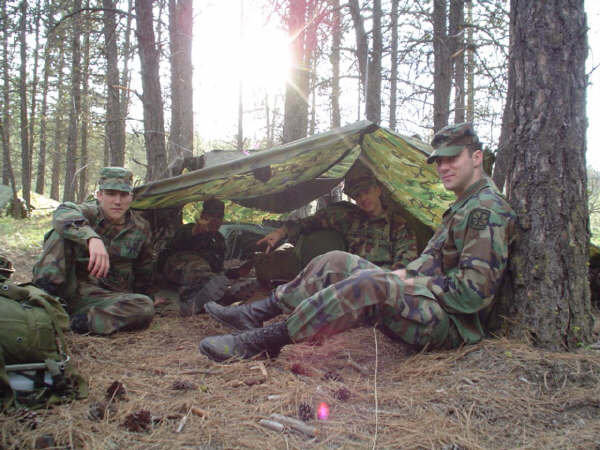How to defend your bug out location
10/24/2018 / By Lance D Johnson

Do you have a safe place to retreat to if the electric grid goes down, if ill-prepared people became desperate for food and water? Your bug out location could be a covert meeting point stocked with adequate survival essentials. Your bug out location could be a well guarded fortress, fully equipped for long term survival success.
Your bug out location should be a place where you and your family can re-establish after you are forced to leave home. In order to preserve your life and liberty, you will need to know how to defend this spot. The first mistake people make is talking about their bug out spot. You should never divulge its location even with your closest acquaintances. If someone you know hasn’t prepared, and a desperate time hits, they may turn on you. If your friends know you are a prepper, encourage them to make preparations of their own so they will be able to cooperate during a crisis situation. If the economic system fails, people will have to barter for goods and services and negotiate their skills. Someone with no real world skill or no useful tools and supplies will become a desperate looter, or worse.
Selecting your spot
Access to clean food and water is very important. A stream, a pond, or a fresh spring makes your location valuable. You should also consider having access to hunting ground and fertile soil. Your survival cache(s) should include communication devices, energy supply, ammunition, hunting gear, seeds, water filters, cutting tools, traps, medical supplies, nutrition, reference information, and long term store-able food. You should be prepared to guard this cache with your life. (Related: Staying safe when SHTF: How to defend your bug out location.)
The weapons and skills needed to defend your life
In desperate times, firearms become the weapon of choice for marauders, rapists, and starving thieves. You should prepare your defense by investing in and practicing with four types of firearms. Your arsenal should include a semi-automatic defensive rifle, a long-range bolt action rifle, a semi-automatic shotgun, and a handgun per person. Stock up on ammunition. Set back a minimum of 1000 rounds of ammo per handgun, long range rifle and shotgun, and stock up 2500 rounds per semi-automatic defense rifle. Include at least 10 magazines per gun. A long term grid down scenario may involve warfare against gangs and small armies. The semi-automatic rifle is a crucial tool for confronting enemies that outnumber you. Additionally, you will need to know hand-to-hand combat techniques when guns aren’t of use. You will also need to learn how to mentally cope during stressful times; this is only learned through actual experience.
To restore civility, be prepared to negotiate with level-minded people, but don’t be fooled by sociopaths who use flowery language to take advantage of you. Guns are oftentimes useless when dealing with manipulators. You will need to learn the mental and interpersonal tricks for dealing with a sociopath. If you don’t discern them first, manipulators can play with your emotions, drain your energy, lie to get their way, and turn people against you. Be prepared to win the mental fight, as well as the physical fight.
Setting up your boundaries and defenses
When defending your bug out location in general, you will need to consider setting up boundaries and defensive shooting positions. Cameras and drones can help identify intruders before they get any closer. You will be able to defend your location much more efficiently if it is on higher ground and not in a valley. Thick, thorn covered plants create a natural boundary. You can also install barbed wire fences or use camouflaged traps to deter intruders. The pit trap with nail boards is one way to capture intruders. To prepare the trap, dig out a ten foot long trench that is two feet wide and six to eight feet deep. Fill the bottom of the trap with boards loaded with protruding nails. Cover the pit with a natural camouflage – a thin layer of grass clogs, twigs, and leaves.
Trenches can also be used as defensive shooting positions, hiding spots, and ambush spots for your team’s advantage. Your defensive shooting trenches should only be four to five feet deep and can be positioned in a V-shape so you and your partners can position your shooting angles for more defensive coverage. Create the trenches so they cannot be used against you and your property, if seized by the enemy.
You should also carefully plan an escape route, in case your safety is compromised and all defense plans fail. The escape route should include adequate cover to avoid detection and potentially a means of transportation for speedy exile. For more on optimizing your bug out location, visit BugOut.News.
Sources include:
Tagged Under: arsenal, bug out, combat, defensive positioning, guns, location, mental stress, prepping, self-defense, Semi-Automatic Rifle, SHTF, strategy, survival, traps, trenches



















